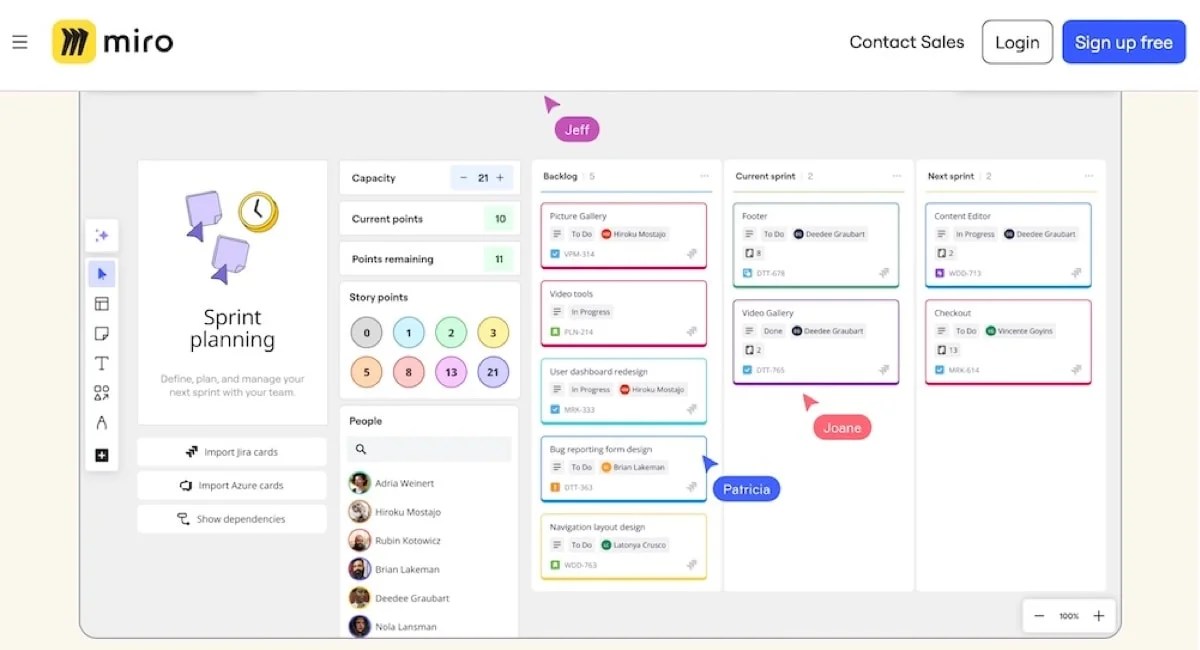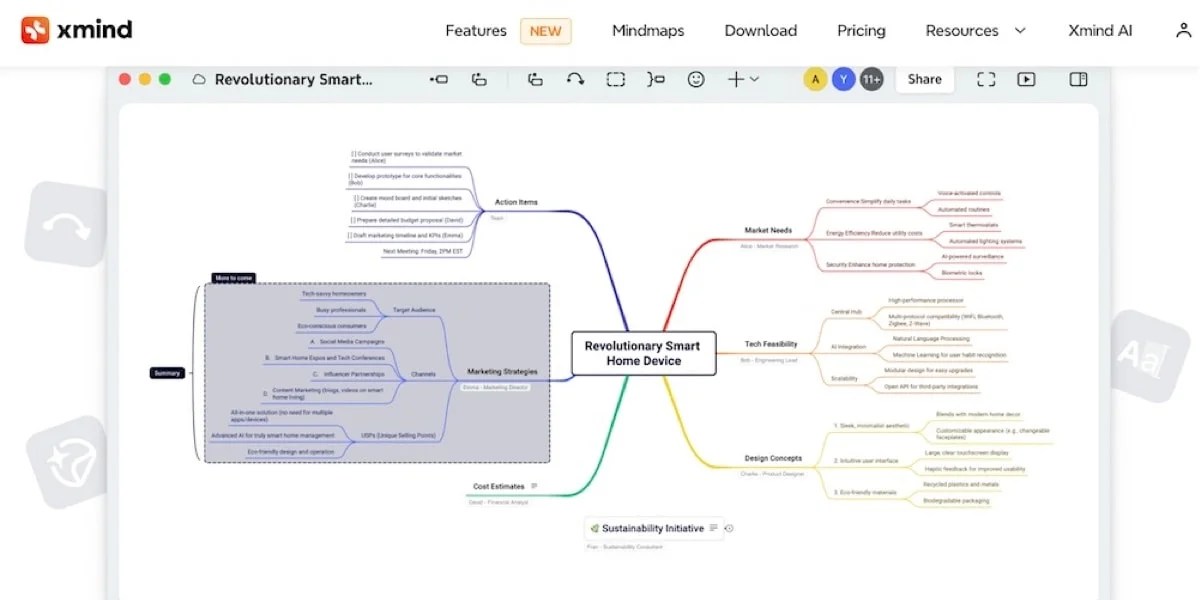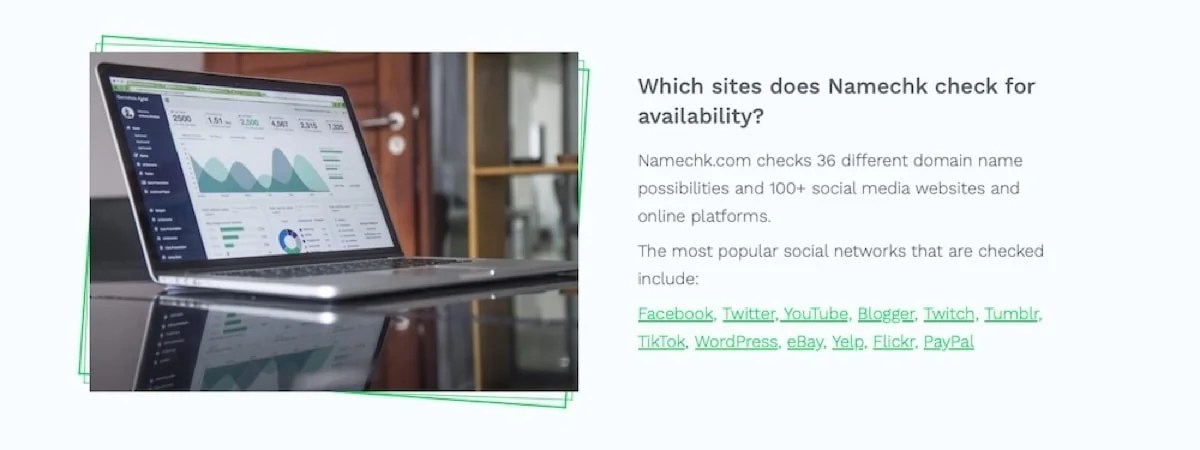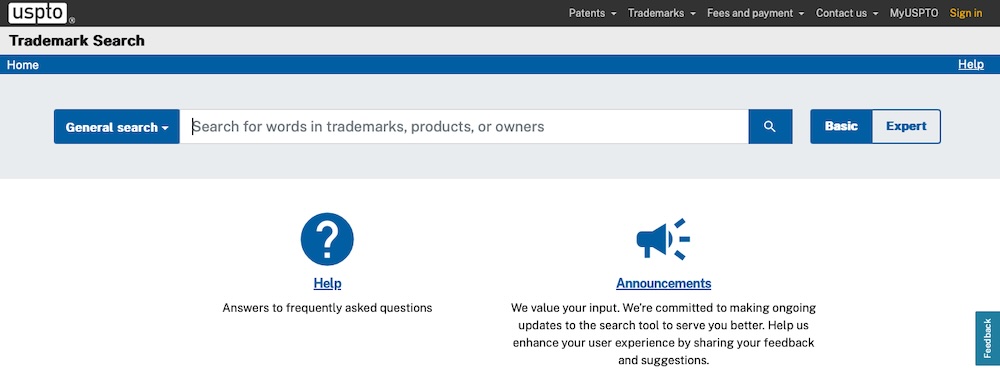What’s in a name? More than you might think. The name of your online store is one of the most important decisions small business owners make. It’s your first chance to make a lasting impression. A catchy business name has to sound good, of course, but it also needs to be memorable, evoke the right emotions, and help your business idea stand out from your competitors.
No pressure or anything!
But think about it: when customers are searching for the products you sell, your store’s name can be the difference between capturing their attention or being overlooked. So, it should reflect your brand, resonate with your audience, and be easy to find online.
The business naming process is both a creative and strategic exercise, and this article will walk you through the whole thing. So, let’s talk now about how to name your online store in a way that makes the right impression.
Before settling on the perfect name for your new online store, you need to cast a wide net. The goal here is quantity, not quality. The more creative online store name ideas you generate at the start, the better your chances of finding something unique, memorable, and reflective of your brand’s future identity.
In this phase, the key is to think broadly and creatively without imposing limitations on the types of names you generate. Later, you’ll sift through this collection and refine it, but for now, let the ideas flow. Here’s a quick rundown of how to make this happen, practically speaking:
Create a collaborative brainstorming space
If you’re working with a team, creating a shared space where everyone can contribute ideas in real time is a must. Using tools like Google Docs, P2, Microsoft OneNote, or a collaborative board like Trello or Miro can make it easy for everyone to jot down ideas on a whim.

Use mind-mapping tools like XMind or even pen and paper if you’re going solo. These can help you capture thoughts in a more freeform way.

Even if you’re the only decision-maker, getting other people involved can give you fresh perspectives. Sometimes, those not directly involved with the business will come up with ideas that spark further creativity or make you think about your store from a different angle.
Set clear goals for the brainstorming session
Before diving into the brainstorming process, give your team (or yourself) a clear set of goals. What kind of business are you building? What’s the tone of your brand? Who is your target audience? Do you want a name that feels playful, professional, or bold?
Defining these parameters upfront will help channel creativity in a productive direction. Without clear goals, you risk generating ideas that feel disjointed or that don’t align with your brand’s identity.
A few useful prompts might be:
- What words describe your core products or services?
- What emotions do you want your customers to feel when they interact with your store?
- Are there any cultural or industry-specific terms that could inspire creative business name ideas?
You’ll likely want a name that exudes luxury, sophistication, and exclusivity if you’re starting a high-end fashion brand. But your name might need to communicate sustainability, natural ingredients, and wellness if you’re launching an eco-friendly skincare line.

Use word association for business name ideas
One of the best ways to dig deeper when brainstorming is through word association. Word association helps spark new ideas by starting with a single concept and expanding outward.
So, you’d start by writing a core word related to your business or industry on a piece of paper. If you’re opening a baked goods shop, start with “bread” or “bake.” If you’re launching an ecommerce store that sells fitness gear, start with “strength” or “movement.”
Ask each participant to write down as many words related to that core word as possible. These might include descriptive terms, emotions, or abstract concepts that the word brings to mind.
For the bakery example, you might write down “artisan,” “rise,” “golden,” or “knead.” And for a fitness shop, terms like “power,” “peak,” “push,” and “endurance” might work.
Use a business name generator
If you’re feeling stuck or need a spark of inspiration, using a free business name generator is a quick way to jumpstart your brainstorming process. These tools help you explore different word combinations, find unique options, and ensure you’re not missing any creative possibilities.
One tool you might find helpful is the WordPress Business Name Generator. It allows you to input keywords related to your industry or business concept, and then generates a variety of catchy business name ideas that fit your criteria. Business name generators often produce results that are unexpected, which can lead to fresh ideas you wouldn’t have thought of otherwise.

Use different naming techniques and frameworks
Besides standard word association, there are several other naming techniques that might work well for your brand. Here’s a quick look at other ways to approach the naming process.
Portmanteaus
Portmanteaus involve blending two words or parts of words to create a new name. It’s a helpful method to use if you’re trying to combine product or service descriptors with a unique twist. But take care — the resulting name should still be simple to say and understand.

A good example of a portmanteau is Netflix. This brand name combines the word “Internet” and “Flicks” (movies) to create a name that tells you exactly what the company is about.
Alliteration
Alliterative names are those where each word starts with the same letter or sound. They often make for catchy business names and are simple to remember. The tech store, Best Buy, illustrates this well. This name tells you what the store offers and has a rhythmic sound to it.
Metaphor or symbolism
You can choose names that are metaphorical or symbolize something related to your product or brand, too. This works well when you’re aiming for a more abstract or evocative brand identity. Nike does this. After all, Nike is named for the Greek goddess of victory and symbolizes triumph.
Foreign words or phrases
Using words from other languages can give your brand a worldly appeal. But do be careful and make sure the meaning aligns with your brand’s message and doesn’t create any unintended confusion or offensive connotations in different cultures. The clothing company Zara is named for the word blooming flowers and beauty in Arabic.

Incorporating a location or origin
For businesses that emphasize locality or a sense of place, using the name of a city, region, or landmark can help create a strong identity. A business like Alaska Airlines has a name that ties it to its location, appealing directly to that community and giving the brand a sense of authenticity.
Acronyms or initials
Acronyms or a set of initials could work for your online store’s name, too. So long as what you come up with represents the business’s core offerings, it can work really well and result in a memorable name.
H&M stands for Hennes & Mauritz, and it’s become synonymous with fast, stylish clothing.

Let the ideas flow over time
Brainstorming doesn’t have to be a one-off event. Good online store name ideas often need time to percolate, and the best name for your store might come to you after a few days — or even weeks — of reflection. Encourage team members to jot down name ideas as they come, then reconvene at a later date.
Avoid early judgment
At this stage, try not to eliminate names prematurely. It’s common to second-guess yourself or dismiss a name because it doesn’t feel perfect right away. But brainstorming is about volume. Many names that seem strange or out of place at first glance could evolve into great options when considered in a different light or combined with other ideas.
Instead of thinking, “Is this the perfect name?” ask yourself, “Does this have potential?” You’ll have plenty of time to refine and filter out names in the next steps. For now, the goal is to gather as many ideas as possible, no matter how unconventional they may seem.
Now that you’ve generated a list of potential names and explored them through structured brainstorming, it’s time to cut down the list. At this stage, it’s essential to approach the process with a more critical eye. Filtering out names that won’t serve your business well in the long run. This involves personal preference, of course, but also practical, legal, and branding considerations.
Eliminate names based on practicality
The first pass in narrowing down your list should focus on practicality. This means considering how each name would function in real-world scenarios.
Here are a few questions to ask yourself:
Can it be spelled easily?
If your customers struggle to spell your store’s name, it could lead to confusion and missed opportunities. Avoid names with ambiguous spellings or words that are commonly misspelled.
Can it be pronounced?
You should be able to say the name naturally in conversation. If it’s too long, awkward, or hard to pronounce, miscommunication is more likely. Imagine introducing your store at a networking event or on a podcast. If it sounds clunky or forced, move on.

Is it user-friendly for your audience?
The name should make sense in the context of your products or industry. While you don’t need to spell out what your store sells in the name, it shouldn’t feel off-brand or confusing, either. A good name gives at least a hint of your store’s identity.
Filter out names that are too similar to competitors
Another important filter is competition. You don’t want your store’s name to be too close to another brand’s, especially if that brand is established. To do this, you’ll need to do some research.
Research competitors
First, search for direct competitors — with physical locations or who are other online stores — in your niche or industry. Make sure your online store’s name is distinct enough to avoid customer confusion. And be sure to check for local competitors, too. Even if you’re operating online, check local businesses to avoid overlap with regional brands.
Tools like Namechk can help you search for existing business names, social media handles, and trademarks across multiple platforms.

Avoid trademark issues
You don’t want to invest time and money into branding your online store, only to find out that the name is legally protected. Infringing on someone else’s trademark could result in lawsuits. And nobody wants that.
Thankfully, there are several places you can use to check for trademarks including:
- USPTO.gov (United States): Offers a searchable trademark database
- WIPO: A solution for international trademarks
- Madrid Protocol: Allows for international trademark registration recognized by 120 countries
- EUIPO: Dedicated to businesses in Europe
- China International Intellectual Property Administration: The official government body for trademark registration in China
- CGPDTM: Handles all trademark applications and protections in India
- ASEAN: Provides intellectual property support across a wide swath of Southeast Asia
- ARIPO: Handles trademark applications for a variety of English-speaking countries in Africa
- OAPI: Controls trademark registration for 17 French-speaking countries in Africa
- INPI: The governmental agency in charge of trademarks for Brazil
- SIC: Handles trademark protections in Colombia, which is also a member of the Madrid Protocol
- IMPI: In charge of trademark registration and enforcement in Mexico

Conduct a thorough search to ensure the name isn’t claimed through an existing trademark.
Evaluate domain availability
Your business name and your domain name should be a perfect match — or as close as possible. Once you’ve narrowed down the list based on pronunciation and uniqueness, check the domain availability of similar URLs.
If the .com domain isn’t available, or if it’s being used by a well-known brand, it might be best to go back to the drawing board.
You can use a service like WordPress.com to see if there’s .com domain name availability for your store. You can also view options for other custom domain extensions as well like .shop and .blog.

With a shorter list of potential names in hand, it’s time to evaluate them against a set of specific, meaningful criteria.
Eliminate names that don’t pass the professionalism test
This next filter is a mental exercise designed to help you evaluate the professionalism of each name. Imagine saying the name of your online store to a journalist from a respected publication, like The New York Times. Would you feel confident in how it sounds? Would the name come across as professional, or would it seem too informal or gimmicky? Could you pitch this name to an investor?
Another way to think of it is this: Is this a name that will grow with your business? While playful names can work for certain brands, ask yourself if the name will still be relevant and credible in five, ten, or 20 years.
Avoid names with negative or unintended associations
Sometimes, a name that seems great in one language or culture can take on negative or even offensive connotations in another. It’s important to research your shortlist of names to ensure none of them carry unwanted associations.
To conduct this check, search for your online store name ideas on Google in different languages to see if they translate to anything inappropriate or undesirable. You can also ask a diverse group of people for their impressions of the name. This could be friends, team members, or potential customers. They might notice associations you hadn’t considered.
Does it convey the right meaning?
A good name evokes the right emotion or association with your brand. It doesn’t have to describe your business literally, but it should convey something meaningful — whether that’s a feeling, a core value, or a concept.
An evocative name creates an emotional connection. And names that evoke strong emotions or imagery are more likely to create a lasting impression on customers.
A solid evocative name is Blue Apron. The name brings up images of cooking and home-style meals, which is fitting for a meal-kit delivery service.

Will the name stand out in search engines?
Searchability plays a role in the name you select, too. Your potential customers will search for products online, so your store’s name needs to be simple to locate in search results. This means choosing a name that’s unique enough to rank high and doesn’t get lost under more common terms or competing brands.
This matters for SEO and for standing out from your competition. And you can test for it by searching for the name and see what comes up. You can also further enhance your site’s SEO by using an extension like Yoast WooCommerce SEO once you’re up and running.
Are there many businesses, products, or concepts with similar names? If so, you might need to choose something more unique. Check social media platforms, too. Consistency across all platforms like Instagram and Facebook matters for building a cohesive brand presence.
Does the name fit with your brand (or what you have planned)?
Your business name should align with the tone, personality, and overall vision of your brand. What the name means on its own matters, but how it fits into your broader brand narrative and how it will evolve as your business grows matters a lot, too.
Your name should give you the flexibility to grow your business. A name that’s too linked to a specific product or trend might feel outdated or limiting as you evolve. And it should reflect the story and values of your business. If it feels disconnected from your core mission or personality, it might be too confusing.
By now, you’ve narrowed down your list and evaluated the top contenders based on key criteria. This final step is about validating your choice and ensuring it matches your brand and business goals.
Here’s how to make that final decision.
Trust your instincts
While data and feedback are wildly important, your instincts shouldn’t be ignored. A name that excites and inspires you is often a good sign it will resonate with others. After all, you’ll be the one representing and growing this brand for years to come. So, ask yourself these questions to get a final “gut” check:
- Does the name energize you?
- Does it match your brand vision?
- Will it age well?
Gather final feedback
Before locking in your choice, consider getting additional feedback from potential customers or colleagues. A quick survey or A/B test can validate that the name works well in your target market.
- Ask potential customers: Survey your target audience with open-ended questions about your top name choices. What emotions or associations do the names evoke? Do they find it straightforward to remember and spell? You can use a WooCommerce extension like User Experience Feedback for WooCommerce to get this info from your test site visitors.

- Conduct A/B testing: Consider running a small A/B test between two name options. Measure which one performs better in terms of click-through rates, engagement, or overall interest.
- Use diverse feedback sources: Don’t limit yourself to friends or coworkers. Reach out to people in different demographics, especially those within your target market. Their fresh perspective can highlight hidden strengths or potential problems.
Pay close attention to negative feedback, especially if multiple people raise the same concern. But don’t let a few individual preferences steer you too far — focus on patterns that emerge.
Test the name in practical contexts
Before you finalize the name, make sure it works in all the practical contexts where it will be seen and used. You’ve figured out if the domain name is available, so that’s one key component down. But this additional check should prevent brand identity issues later on.
Test the name within a logo and branding. See how it looks in different fonts, designs, and colors. Does it offer flexibility in branding, or does it feel restrictive? You want a name that looks great on everything from your website to packaging (if applicable).
Check the name on all social platforms you plan to use, too. Does the name fit character limits? Are the handles available?

Finalize the decision and move forward
Once you’re confident that you’ve chosen the right name, act quickly to secure all relevant assets. Domains and social media handles can get taken fast, so don’t delay.
- Register your domain names: Get the .com version of your name if possible, and a relevant alternative if needed like .co, .store, .blog, and so forth. Use something like WordPress.com to secure it.
- Secure social media handles: Claim your social media handles on all platforms where you’d like to have a presence for your small business, even if you’re not launching immediately.
- Get trademark protection: Depending on the scope of your business, it might be worth filing for a trademark to protect your name from competitors. Consult a lawyer if you’re unsure, especially if you plan to scale your brand nationally or internationally.
So, you have the tools to come up with memorable, effective online store name ideas for your business. You understand what makes a great name, know why it matters, and have a clear process to follow — plus some key criteria to keep in mind as you refine your options.
All there’s left to do is to get started! Gather your ideas, follow the steps, and choose a name that will help your online store stand out for years to come.
When you’re ready to start your ecommerce business, be sure to build on WooCommerce to retain full ownership of your hard work and maximum flexibility to grow from startup to enterprise.
Kathryn Marr is the co-founder and Chief Creative Officer of Blue Ivory Creative, where she combines design expertise with a deep understanding of ecommerce and WordPress. She helps brands turn complex ideas into clear, compelling content that connects with their audience — whether they’re just starting out or firmly positioned among the world’s leading companies.


![AI can boost conversions from your web page — HubSpot’s CMO shows you how [tutorial] AI can boost conversions from your web page — HubSpot’s CMO shows you how [tutorial]](https://knowledge.hubspot.com/hubfs/ai-1-20250605-395473.webp)






